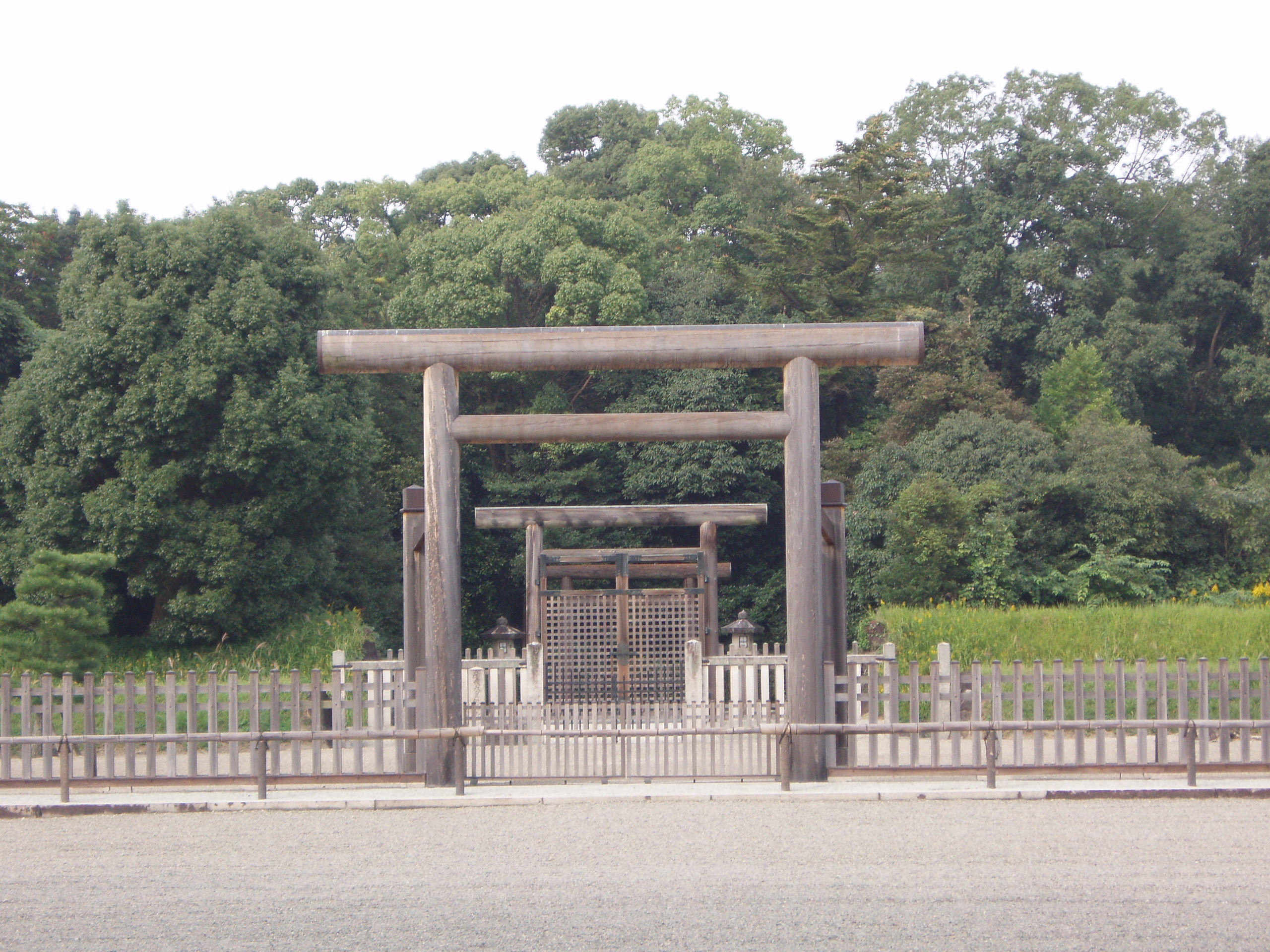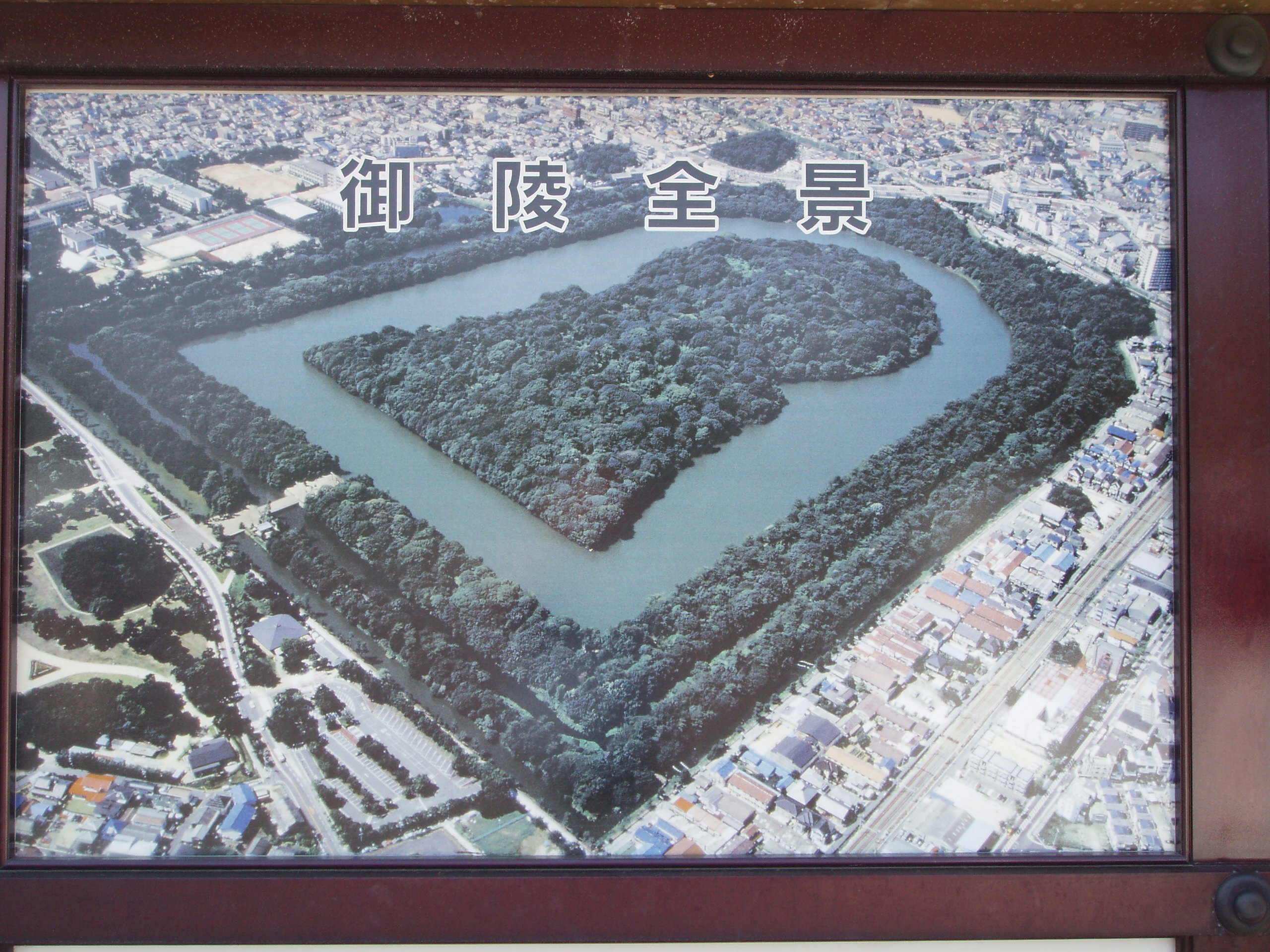Burial mounds for emperors set to gain World Heritage listing
By MAYUMI UEDA/ May 14, 2019 Asahi Shimbun
UNESCO signaled its readiness May 13 to grant World Heritage status to a cluster of “kofun” burial mounds in Osaka Prefecture dating to the late fourth and fifth centuries.
Of the 49 mounds under consideration, 29 are thought to be those of emperors, empresses or other imperial family members.
UNESCO officials informed the government that the committee assessing candidate sites has recommended that the 49 burial mounds be added to the heritage list.

Entrance at the “Nintoku burial mound’ in Sakai, Osaka, considered the third biggest burial site in the world (Photo John Dougill)
The burial mounds in the Mozu and Furuichi areas of Osaka include the largest one in Japan and said to be for Emperor Nintoku.
The mounds being considered for inclusions were constructed in what is considered the high point of the Kofun period.
A key issue regarding the evaluation by the International Council on Monuments and Sites (ICOMOS) was how experts would take into account the lack of extensive archaeological research into many of the burial mounds.
The Imperial Household Agency oversees the 29 burial mounds with links to past emperors and other imperial family members and has until now severely restricted research into the sites.
Initially, agency officials asked that the candidacy include the fact that one burial mound is for Nintoku.

Daisen mound, said by the Imperial Household Agency to be Nintoku’s burial tomb. It’s the largest burial mound in the world in terms of ground size. (Asahi)
However, archaeologists and historians pointed out that the naming should only include the locations where the burial mounds are found because of the paucity of scientific research that makes it impossible to conclusively state who was buried where.
The Daisen burial mound in Sakai believed built for Nintoku is the largest, measuring 486 meters in length.
Another site in the group up for UNESCO consideration is the Konda-Gobyoyama burial mound in Habikino, where Emperor Ojin is believed buried. That mound is 425 meters in length.
The 49 burial mounds come in all shapes and sizes. Some are in a moated keyhole design denoting someone of great importance was buried there, while others are shaped like a scallop shell, or circular and rectangular.
The Mozu area that now includes Sakai and the Furuichi area covering Habikino and Fujiidera were centers of politics and culture in ancient times.
The burial mounds are physical representations of the authority and social status of the individuals buried there, and thus serve as important evidence about early Japanese history.
The final decision for inclusion into UNESCO’s World Heritage list will be made at a World Heritage Committee meeting scheduled to start June 30 in Baku, Azerbaijan.

The Hashihaka burial mound near Sakurai in Nara Prefecture, said by some experts to be that of legendary third-century Empress Himiko

